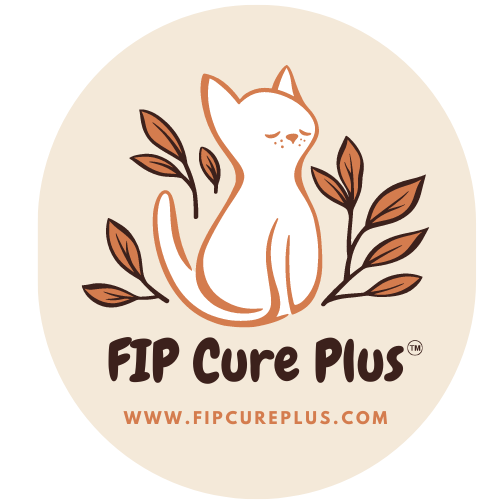Handling FIP Cases with Concurrent Conditions in Cats
Share
Handling FIP Cases with Concurrent Conditions in Cats
When dealing with a cat diagnosed with Feline Infectious Peritonitis (FIP), it’s not uncommon to encounter other health issues occurring simultaneously. These co-existing conditions can complicate treatment but, with the right approach, they can be managed effectively to maximize the cat’s chances of recovery.
Understanding FIP and Its Impact on the Body
FIP is caused by a mutation of the feline coronavirus. Once this mutated virus spreads in the cat’s body, it often weakens the immune system, leaving the cat more vulnerable to other infections or conditions.
Common co-existing conditions in cats with FIP include:
1. Upper Respiratory Infections (URIs)
2. Gastrointestinal Issues
3. Kidney or Liver Problems
4. Parasites
5. Neurological Disorders
Effectively handling FIP cases with these concurrent conditions requires a comprehensive treatment plan.
Steps to Handle FIP Cases with Other Conditions
1. Start with a Thorough Diagnosis
Before starting treatment for FIP, it’s crucial to evaluate the cat for other health issues.
• Blood tests, X-rays, and ultrasounds can help detect infections or organ dysfunctions.
• Pay close attention to symptoms like vomiting, diarrhea, sneezing, or lethargy, which may point to underlying problems.
Tip: Communicate openly with your veterinarian and share any observations about your cat’s behavior or symptoms.
2. Prioritize FIP Treatment
FIP Cure Plus should remain the cornerstone of the treatment plan. Its primary role is to stop the progression of the mutated coronavirus, which will allow the immune system to strengthen and begin healing.
Administer FIP Cure Plus according to the prescribed dosage for 12 weeks. Ensure consistent timing and proper technique when giving injections or oral medication.
3. Manage Secondary Conditions
A. Upper Respiratory Infections (URIs)
• URIs are common in cats with weakened immune systems.
• Treatment: Use vet-prescribed antibiotics to combat bacterial infections. Increase fluid intake and use humidifiers to ease breathing.
• Support: Ensure your cat is warm, stress-free, and eating well.
B. Gastrointestinal Issues
• Vomiting and diarrhea may result from FIP itself or secondary infections.
• Treatment: Probiotics, anti-nausea medication, and vet-recommended dietary changes can help.
• Support: Feed smaller, more frequent meals to avoid overloading the stomach.
C. Kidney or Liver Dysfunction
• FIP can place stress on vital organs like the liver and kidneys.
• Treatment: Include supplements like SAMe, milk thistle, or renal support diets as advised by your vet. Administer fluids for hydration if needed.
D. Parasites
• Parasites such as worms or fleas can worsen a cat’s condition.
• Treatment: Dewormers or flea treatments should be used carefully alongside FIP treatment to avoid overwhelming the body.
E. Neurological Symptoms
• Some cats with dry FIP develop neurological issues like tremors or seizures.
• Treatment: Anti-inflammatory drugs and FIP Cure Plus are key. In severe cases, consult your vet about additional medications for seizures or nerve pain.
4. Maintain Proper Nutrition
Cats with FIP and other conditions often lose their appetite. However, proper nutrition is essential for recovery.
• Offer high-protein, easy-to-digest meals.
• Warm up the food slightly to make it more appealing.
• If your cat refuses to eat, consider appetite stimulants or syringe feeding.
5. Monitor and Adjust Treatment
Frequent monitoring is critical when handling FIP cases with co-existing conditions.
• Regularly check your cat’s weight, temperature, and hydration levels.
• Schedule follow-up visits with your vet to adjust the treatment plan as needed.
Warning Signs to Watch For:
• Severe weight loss
• Labored breathing
• Persistent vomiting or diarrhea
• Neurological changes
6. Provide Emotional and Environmental Support
Cats with FIP and other health issues can become stressed, which worsens their condition.
• Create a quiet, cozy space where your cat feels safe.
• Spend quality time with your cat to provide emotional reassurance.
A Holistic Approach to Healing
Cats with FIP and concurrent conditions require patience, dedication, and a holistic approach to care. By prioritizing FIP treatment with FIP Cure Plus while addressing secondary conditions, you can give your cat the best possible chance at recovery.
Remember, every cat’s journey is unique. Monitor their progress closely, consult your vet regularly, and adjust the treatment plan as needed.
